The Films & Photography of
GORDON PARKS Sr.
| THE LEARNING TREE (Wednesday) | LEADBELLY (Thursday) | SHAFT (Friday) |
"My experience--though I would never wish it upon anyone else--has helped make me whatever I am and still hope to be. . .I have come to understand that hunger, hatred, and love are the same wherever you find them, and it is that understanding that now helps me escape the past that once imprisoned me." - Gordon Parks, A Choice of Weapons
Gordon Parks Sr. is an accomplished author, composer, filmmaker, and internationally renowned and award-winning photo-journalist. Born in Fort Scott, Kansas in 1912, Gordon Parks overcame poverty and racism to master his art. After his mother died when he was in his teens, Parks left Kansas for Minneapolis and supported himself by working as a piano player, busboy, basketball player and Civilian Conservation Corpsman. At the age of 25, he began to seriously consider photography as a career direction.
Parks first big break in professional photography came when he convinced a woman's clothing store in St. Paul, Minnesota to let him try his hand at fashion photographs. His pictures led him to other fashion assignments in Chicago. With recognition for his art growing, Parks, in 1941 became the first photographer to receive a fellowship from the Julius Rosenwald Foundation. He chose to work with Roy Stryker at the Farm Services Administration (FSA), a government agency designed to call attention to the plight of the needy during the Depression and to create an historical record of social and cultural conditions across the country.
In 1943, the FSA was dissolved for political reasons, but Roy Stryker arranged for Parks to move with him to the Office of War Information (OWI). One of his first assignments was to photograph the 332nd Fighter Group, the first black air corps. He then followed Stryker to the Standard Oil (New Jersey) Photography Project, which allowed some of the best photographers of the time to photograph in small towns and industrial centers throughout the United States.
In 1944, Parks renewed his search for photography jobs in the fashion world. Despite racists attitudes of the day, Vogue editor Alexander Liberman hired Parks to shoot a collection of evening gowns. Following that first assignment, Parks photographed fashion for Vogue for the next few years. During this time he also published his first two books, Flash Photography (1947), and Camera Portraits: Techniques and Principles of Documentary Portraiture (1948). Parks found fashion photography interesting and rewarding, but also wanted to use his talent as a photojournalist. In 1948 he became the first black photographer at Life magazine. Some of his most important assignments for Life were stories on a Harlem gang leader, on segregation in the South, on crime in the United States, on the Black Muslims, and on the plight of an underprivileged Brazilian boy named Flavio.
In 1950, Parks moved to Paris as a European correspondent for Life, photographing for several years in France, Italy, Spain, and Portugal. Parks was given great access to celebrities, gaining their trust and shooting beautiful and touching portraits of them.
By the 1960s, Parks enjoyed status as one of the country's most influential photojournalists. Along with many other projects, he continued his work documenting the civil rights movement in the United States. In 1963, he published the autobiographical novel The Learning Tree, based on recollections of his childhood in Kansas.
In addition to The Learning Tree, Parks has written three other books about his life: A Choice of Weapons, To Smile in Autumn, and Voices in the Mirror. Parks also published several volumes of poetry combined with his photographs, including Gordon Parks: A Poet and His Camera; Gordon Parks: Whispers of Intimate Things; Gordon Parks: In Love, Moments Without Proper Names; Arias of Silence; and Glimpses Toward Infinity.
Parks also began to make films in the early 1960s. His award-winning film, based on The Learning Tree, and completed in 1969, was a ground breaking venture. It was one of the first Hollywood motion pictures directed by an African American filmmaker. Parks went on to make Shaft (1971), Leadbelly (1976), Solomon Northup's Odyssey (1984), and a number of other significant films including Flavio; Diary of a Harlem Family; Shaft's Big Score; The Super Cops; and Moments Without Proper Names. His musical compositions of classical, blues, and popular music--including a symphony, sonatas, concertos, and a ballet about the life of Martin Luther King Jr, titled Martin (1989)--have been performed and recorded internationally.
Gordon Parks's photography will be on display in the New York State Museum Photography Gallery from January 15 through February 28, 1999 as part of the We Shall Overcome: Photographs from America's Civil Rights Era Exhibition. He will discuss his work and career on Wednesday, February 17, 1999 at two locations.
February 17, 1999 (Wednesday)
5:00 p.m. - New York State Museum Theatre Gordon Parks will discuss his and others' photography appearing in the exhibit We Shall Overcome: Photographs from America's Civil Rights Era which will be on display in the NYS Museum Photography Gallery from January 15-February 28, 1999.
Cultural Education Center, Albany
7:00 p.m. - Page Hall, 135 Western Avenue Gordon Parks will provide film commentary and answer questions immediately following the screening of his film THE LEARNING TREE.
University at Albany's downtown campus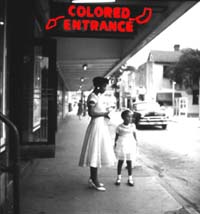
(Both events are free and open to the public.)

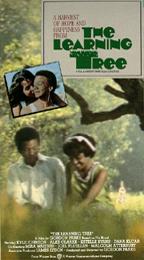 February 17, 1999 (Wednesday) at 7:00 p.m. Page Hall, 135 Western Avenue (American, 1969, 107 minutes, color, 35 mm) Starring Kyle Johnson, Alex Clarke, Estelle Evans
Visually beautiful and moving, THE LEARNING TREE is the story of a black teenager growing up in Kansas in the 1920's. Parks directed, produced, wrote, and composed the score of this adaptation of his 1963 semi-autobiographical novel. |

February 18, 1999 (Thursday) at 7:30 p.m. Page Hall, 135 Western Avenue (American, 1976, 126 minutes, color, 35 mm) Starring Roger Mosley, Paul Benjamin, Madge Sinclair | 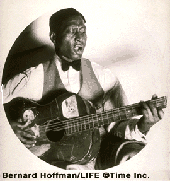 |
LEADBELLY is a poignant biography of the tortured life of legendary blues/folk singer Huddie Ledbetter. Master of the 12-string guitar, Ledbetter wrote or adapted such classic tunes as "Goodnight, Irene," "The Midnight Special," "Rock Island Line," and "The Bourgeois Blues."

 | SHAFT February 19, 1999 (Friday) at 7:30 p.m. Page Hall, 135 Western Avenue (American, 1971, 98 minutes, color, 35 mm) Starring Richard Roundtree, Moses Gunn, Charles Cioffi |
Director Parks brings together his talent for capturing an image and his personal knowledge of life on the street to create a hard-hitting action thriller. Richard Roundtree plays a private detective hired by a Harlem mobster to find his kidnapped daughter. Issac Hayes's "Theme from Shaft" won an Academy Award for Best Original Song.
New York State Museum and Museum Institute
Greater Capital Region Teacher Center
New York African American Research Foundation at SUNY
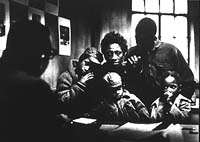
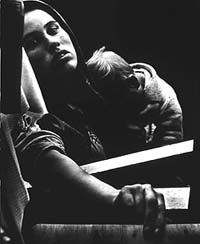

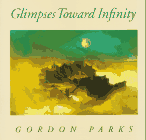

|
Writers Online Magazine Article Gordon Parks: Multimedia Legend, Times Union Article |
|